 Thank you all for selecting a conference time for your child to share his or her portfolio and learning goals. We are looking forward to sharing with you. This week has been full of planning and making. We are putting our portfolios together. We’re creating our animals for the zoo and building our habitats too. And we are reading together in Thanksgiving book clubs. 3E is a busy place.
Thank you all for selecting a conference time for your child to share his or her portfolio and learning goals. We are looking forward to sharing with you. This week has been full of planning and making. We are putting our portfolios together. We’re creating our animals for the zoo and building our habitats too. And we are reading together in Thanksgiving book clubs. 3E is a busy place.
Building Habitats
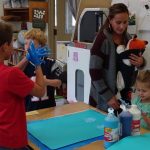

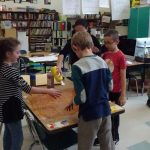 On Tuesday morning we began the day with white tri-folds and 24”x36” sheets of paper. By the end to the day, thanks to Kristen Samson, Melissa Romanowsky and Nermina Peterson, our habitat backgrounds had begun to take shape. Thank you for helping us with this project.
On Tuesday morning we began the day with white tri-folds and 24”x36” sheets of paper. By the end to the day, thanks to Kristen Samson, Melissa Romanowsky and Nermina Peterson, our habitat backgrounds had begun to take shape. Thank you for helping us with this project.
As zookeepers, the kids are responsible for housing their animal in a habitat as close to its natural habitat as possible. We’ve had fun this week creating and building those habitats. It is interesting to see how the children think about and interpret what they’ve been reading and viewing. We are looking forward to sharing this all with you at 3E’s Animal Wonderland on Tuesday, November 28.
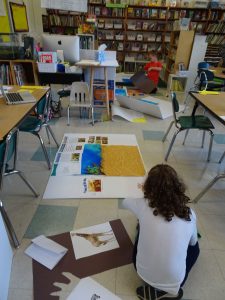 Our zoo project seems to have inspired many ideas. Thank you for encouraging and supporting these home school connections. Children have created original zoo logos. This week Emily launched her “Good Deeds Club.” The kids are very excited about finding ways to raise money for endangered animals and people in need as well. Annika invented animal shaped pads of paper and taught us how to make them. It is exciting to see how the ideas connect and extend from one thing to another. I think that our animals and the zoo will be with us long after the formal study of habitats and informational reading and writing are over.
Our zoo project seems to have inspired many ideas. Thank you for encouraging and supporting these home school connections. Children have created original zoo logos. This week Emily launched her “Good Deeds Club.” The kids are very excited about finding ways to raise money for endangered animals and people in need as well. Annika invented animal shaped pads of paper and taught us how to make them. It is exciting to see how the ideas connect and extend from one thing to another. I think that our animals and the zoo will be with us long after the formal study of habitats and informational reading and writing are over.
Learning A Bit About History
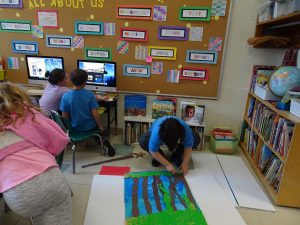 This week we began reading more about Thanksgiving. We’ve learned some about the first Thanksgiving and also some of how Thanksgiving was first proclaimed a national holiday. Did you know this happened all because of a New Hampshire woman, Sarah Josepha Hale? Ask your child what he or she remembers about her and her efforts to set aside a day of thanks in our country. Sarah was a determined woman who did some amazing things in the early 1800’s when opportunities for women were very limited.
This week we began reading more about Thanksgiving. We’ve learned some about the first Thanksgiving and also some of how Thanksgiving was first proclaimed a national holiday. Did you know this happened all because of a New Hampshire woman, Sarah Josepha Hale? Ask your child what he or she remembers about her and her efforts to set aside a day of thanks in our country. Sarah was a determined woman who did some amazing things in the early 1800’s when opportunities for women were very limited.
We also discovered that some of what we thought was true about Thanksgiving may not be accurate and we are looking forward to understanding more. Here are a few facts we found interesting: About 100 Pilgrims sailed to America on the Mayflower, but 50 of them died in the first winter. There were 22 children. They ate stale bread and cheese. The Indian helped them in the spring. The Indians taught them about corn and planted it with a dead fish. The first Thanksgiving was three days long.
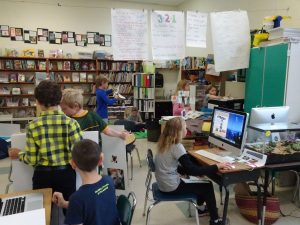 We are looking forward to learning more about the history of Thanksgiving when we go to the NH Farm Museum on Monday.
We are looking forward to learning more about the history of Thanksgiving when we go to the NH Farm Museum on Monday.
Reflecting on What “Best Work” Means
The children have been describing their strengths as readers, writers and mathematician. They have taken time to reflect on their work habits and to consider how they might help themselves grow even further. They’ve been gathering work samples to share as evidence of what they can do at present. They are thinking about what “best” means. Is it neat? Is it correct? Should it show thinking and learning? Can is show mistakes? Should it show mistakes? Isn’t that where the learning is? How do you show collaboration? What of cooperation and creative problem solving? How can you capture the process of learning? We’ve been exploring these ideas and more, as we think about what learning is and when it feels exciting and fun.
Bits and Pieces –
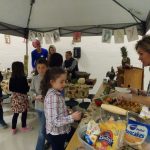
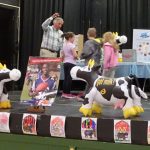 We’ve begun 5th chapter read-aloud, The Seven Wonders of Sassafras Springs. It takes place in 1923. It is first historical novel and it is adding more to our understanding of how things like transportation, schooling and even shopping changes over time.
We’ve begun 5th chapter read-aloud, The Seven Wonders of Sassafras Springs. It takes place in 1923. It is first historical novel and it is adding more to our understanding of how things like transportation, schooling and even shopping changes over time.- We tried lots of delicious foods at the Food Day Celebration on Tuesday. Thank you to Mrs. Fields for bringing together such wonderful group of displays.
- We’re continuing to learn how to form the kite string cursive letters.
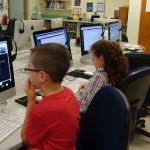 We’ve also discovered that rounding to the nearest 10 or 100 is pretty easy. We can also use that skill to quickly check if some of our other math calculations are accurate or not.
We’ve also discovered that rounding to the nearest 10 or 100 is pretty easy. We can also use that skill to quickly check if some of our other math calculations are accurate or not.
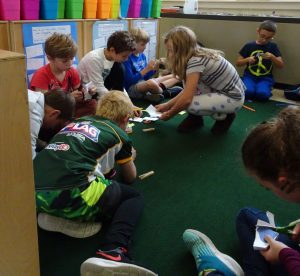
i loved that book!! it was soooo good! 3E looks very fun